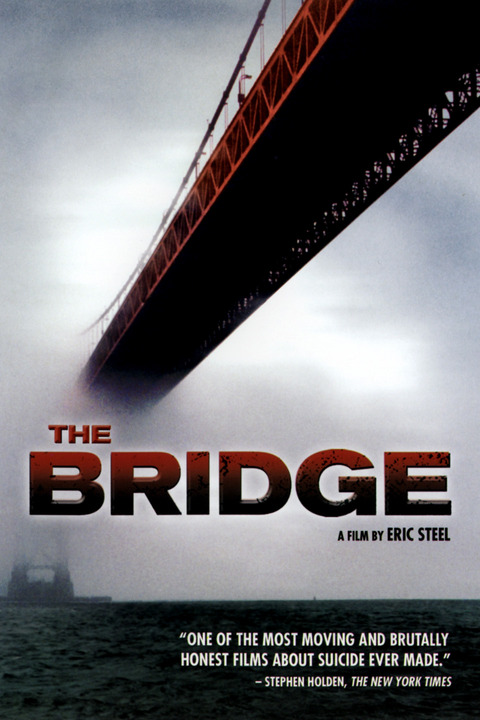The Bridge (Eric Steel, 2006)
Suicide almost does not exist in the world of the movies. No wonder: to this day it is a conversation too difficult to have, so personal and indivisible is the pain that come from within. Even daring filmmakers like Lars von Trier have avoided the subject altogether : in " "Melancholia" (2011), Kirsten Dunst´s Justine is so depressed that she can barely get out of bed. But there are no signs that she actually thought, talked or tried to commit suicide. Looking back to Classic Hollywood, Frank Capra created " It is a wonderful life" (1946) around an attempt suicide of the main character ; during Pre-Code period it was effectively used more than once as catalyst to the story ( "Gambling Lady, 1934"), at the very conclusion of a drama , a desperate act of redemption ("Three on a Match, 1932") or simply as a kind of love sacrifice, a gesture of one of those " assexual husbands" that Jeanine Basinger writes about (" The Single Standard, 1929"). Both censorship and the hardness of the subject almost banned suicide from the screens, with occasional exceptions such as the exquisite " Vertigo" ( 1958) , as though fiction had no use for it.
The documentary "The Bridge" picks up the San Francisco location. For a cinephile, the first assumption I made was that the choice had been partly motivated by the Hithcock movie, something like following up real suicides that took place at Golden Gate Bridge instead of the fake one. But in reality, it had nothing to do with the magnetic beauty of the classic movie: it was a rather rational and cold choice. Based on article called " Jumpers", that appeared on New Yorker magazine in 2003, director Eric Steel elected to make his documentary a piece on the banality of the last moments of desperate people amid the gorgeous scenery- Nature does not mind our internal and personal sorrows after all. Armed with the statistics that pointed out that an average of two suicides per month are commited at that location, the director placed the camera on ground level, facing the sidewalk along the bridge. And kept filming for a full year. His crew was able to catch not only the actual suicide of more than 20 people, but also their last strugles before jumping, After a while, they knew to identify those who were walking that path to end their lifes. And they followed every step, every doubtful movement towards the edge in a very matter of factly way that makes you all but cold.
Between the sad images, reminescent of the Twin Towers jumpers, family and friends are interviewed. We follow the stories of 3 who suceeded and 2 people that failed- a woman who was rescued by a nearby amateur photographer, and a man who midway through the jump changed his mind and asked for heavenly intervention. The testimonials are compelling as one would expect. The people left behind talk about knowing that the decision of ending it all as made a long time ago, after years of almost constant pain and strugle. Nobody that cared was surprised by it; only a couple thought they could have somehow stopped it, or helped more.
There is a perversive ambiguity in this documentary, not lost on anyone. It is very difficult to watch the suicide scenes whithout feeling the absolute urge to try and stop them, and yet the very premisse of the documentary is one of non interference stance: those people were set to do it, regardless of our feelings; to end their lives was their decision, their goal and we should have respect for them. It does not try to explain the motivations behind the suicides hard enough, instead it is more interested in the actual process, the planing put into it. One can choose to see this as a hauntly beautiful tributer, a chance for those desperate people we would otherwise not hear about to tell us their stories, but the moral implications of playing Peeping Tom in actual suicides infects the whole narrative and make this documentary a spoiled piece on the morbid banality of death.

Nenhum comentário:
Postar um comentário